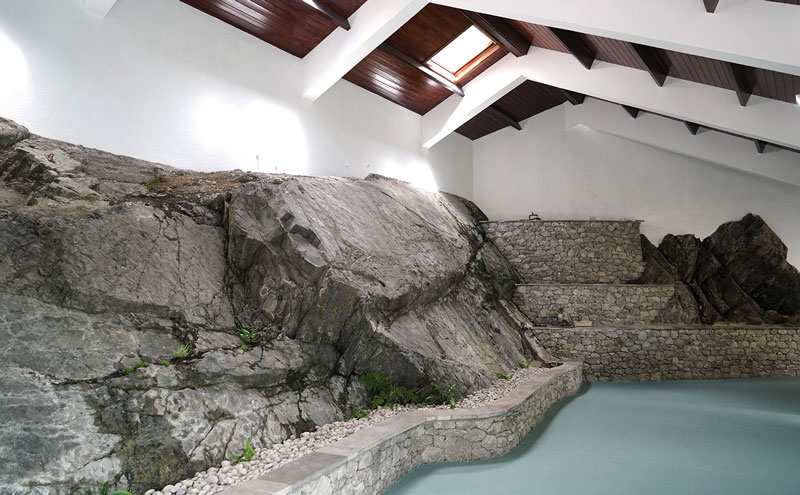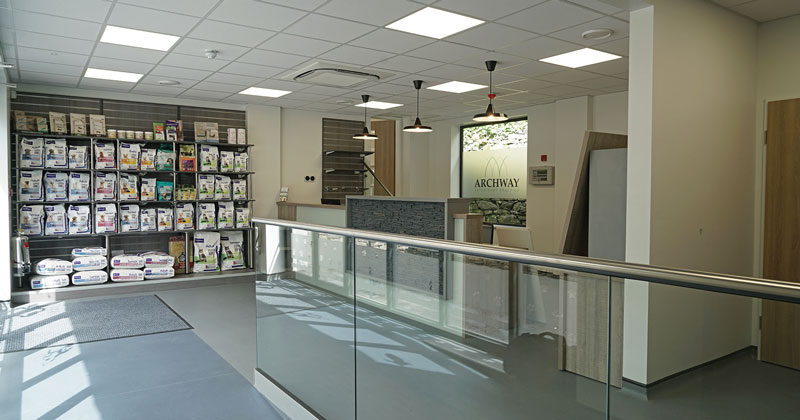26 Feb 2020
VBJ’s latest planning insight feature sees this company, which has years of experience designing and managing the build of vet clinics, share its expertise on what matters when it comes to delivering great projects to fit that all-important budget.

Image © Archway Veterinary Practice
When most veterinary professionals start thinking about their perfect practice building, their thoughts often go first to function – piped gases, disease control or number of consulting rooms.
Next, their minds turn to design – will my practice have great kerb appeal and attract new clients? Often further down the thought process is the kind of experience the practice delivers – for its staff, clients and patients.
Sometimes, it’s worth turning it all on its head: what does my practice need to provide to offer a positive and memorable experience for my clients, their pets and my employees? ACD Projects has many years of experience designing and managing the build of veterinary practices, both here in the UK and further afield. It means we really know what matters when it comes to delivering great projects to fit that all-important budget.
Site choice is hugely important and we have found that, time and time again, if your practice is easy to find, you are already halfway to owning a successful business. It’s the reason practices often choose to stay put and renovate in their existing location, why some opt to convert a quirky or challenging building and why it can take some time to find the ideal new site.
Location is something we look at right from the start when advising clients. When we visited one ex-BMW showroom it incorporated a large outcrop of rock inside the building. For that we can find innovative solutions – in this case it became a visually stunning and relaxing water feature for the practice hydrotherapy area. But a tricky location that’s hard to navigate to is much more difficult to deal with, no matter how resourceful we are around signage and client directions.
In the same vein, parking is a big issue and can account for a big chunk of your site space. Planners these days often require bicycle parking racks, which is great for your green credentials (and sometimes a nice staff benefit), but perhaps less practical for clients with pets.
You might also want to think about electric car charging points and the impact of the parking on the look of your building. Lots of innovative solutions exist, from location of the car park, to landscaping and even alternatives, such as reimbursing clients for local paid car parking, or asking your staff to park away from the practice or incentivising them to use public transport.

When you consider the whole client experience, it’s likely that, for your clients, much of their time will be spent in and around the reception and waiting area. Receptionists tell us they want to be able to provide a warm welcome, and even get out from behind the desk and engage with the pet. It’s the first, and often last (and lasting), impression of the practice.
Wear and tear on materials in this area can be considerable, but you will want to create a clean, premium look that sets a client’s mind at ease that standards will be maintained. In a small area, a barking dog will soon set off all the rest, so think about acoustics.
Sound isn’t just a trigger for patient stress, it can also be difficult for staff exposed to loud noises for extended periods of time, and clients can also perceive it as having a negative impact on their pet or a reflection of another animal’s distress.
As well as good sound insulation and selecting the right materials, you can also improve acoustics with soft furnishings – although cleanliness and infection control also has to be considered. A double height atrium can create an impressive entrance, but we may suggest ways to prevent sound from echoing through the area – especially if it has external access and the potential to annoy any neighbours. Remember, too, that high-level areas can get dusty and prove difficult to clean.
A separate cat waiting area, with cat carrier shelves higher up, is a great addition. We often also include a place to store blankets and pheromone spray to accompany each cat during its practice journey. This makes a considerable impact on the patient experience by reducing fear, and the client is often impressed by the thought that has gone into such initiatives.

In a tightly confined area, where people and pets have to constantly squeeze by each other, real potential exists for high levels of stress, making everyone generally uncomfortable.
When designing a build we look at how people move through the practice, paying special attention to entrances and exits – especially in areas where one person can be coming in at around the same time that someone else might be leaving. For instance, narrow corridors from the waiting room to the consulting room should really be avoided.
That’s why we will look at how clients and employees move through the practice, and avoid crossover of the entrance and exits (where traffic is often simultaneous) wherever possible.
In a busy practice, a lunch room where staff can have some downtime away from clients is essential. No one wants to be ducking out of sight with a sandwich to avoid a client asking him or her questions while on a break. Those sorts of things can matter when it comes to recruitment and retention, which are big issues in the profession right now.
A growing body of research is focusing on the well-being benefits of spending time outdoors or being able to view the natural world. In small animal practices, you may want to consider consulting rooms with windows – which can be non-opening or have grids so patients can’t escape. If space allows, an outdoor area can be created for staff to use for breaks when the weather improves.
Showers and locker rooms allow staff to cycle or walk to work – alleviating your car park requirements, too. If you think it all through in advance, it’s amazing how often looking at your project from the point of view of the experience can also have a positive effect on function. The end result should be a design that works for everyone – and that’s something we always aim to achieve.
From the construction of large veterinary hospitals to small practice renovations, we’ve been providing advice and guidance to the veterinary profession to create its perfect buildings for more than 25 years.
Are you ready to commission an architect, a builder, a surveyor, a planning expert, a ventilation or lighting engineer, an interior designer and a project manager? Please talk to us first.
ACD Projects can support you from the start of the process, right through to the end. Whether it’s help with site selection and initial costing, preparing a business plan for your lender or tenders for local contractors, we have the expertise and resources to deliver the ultimate best price, and help you secure your facility in time and to your budget.
Would it cost more to refurb or is it better to extend? Perhaps a more cost-effective way exists to tackle that new build you always wanted? Our experience can help you make the right decision.
Even master builders don’t always know what materials are durable in a veterinary environment, and will provide form and function for least cost. They might even have knowledge gaps in specialist areas, such as radiation protection, resulting in delays, planning issues and those costly “extras”. Our team can help you where and when you need it, guiding your existing builders as to what’s feasible, or managing the whole project.
We’re also happy to help you with any troubleshooting that may develop – whether that’s the budget veering off target or construction lagging behind schedule. But best of all, we’d love to be involved from the start of your project, saving you time, money and worry and delivering a great result.
If you are looking for inspiration, check out our website, which has examples of some of the hundreds of practices we have worked on – from heritage builds to grand designs. There’s lots to see at www.acdprojects.com to guide your thinking so you can have a building that’s truly unique.
We offer a free half-day site visit to discuss your requirements, or you can give us a call anytime. You can also catch up with us at some of the veterinary congresses and events we attend – including BSAVA Congress in April.
ACD Projects, 11 Kings Court, Willie Snaith Road, Newmarket, Suffolk CB8 7SG. Telephone 01638 560343 or email [email protected]